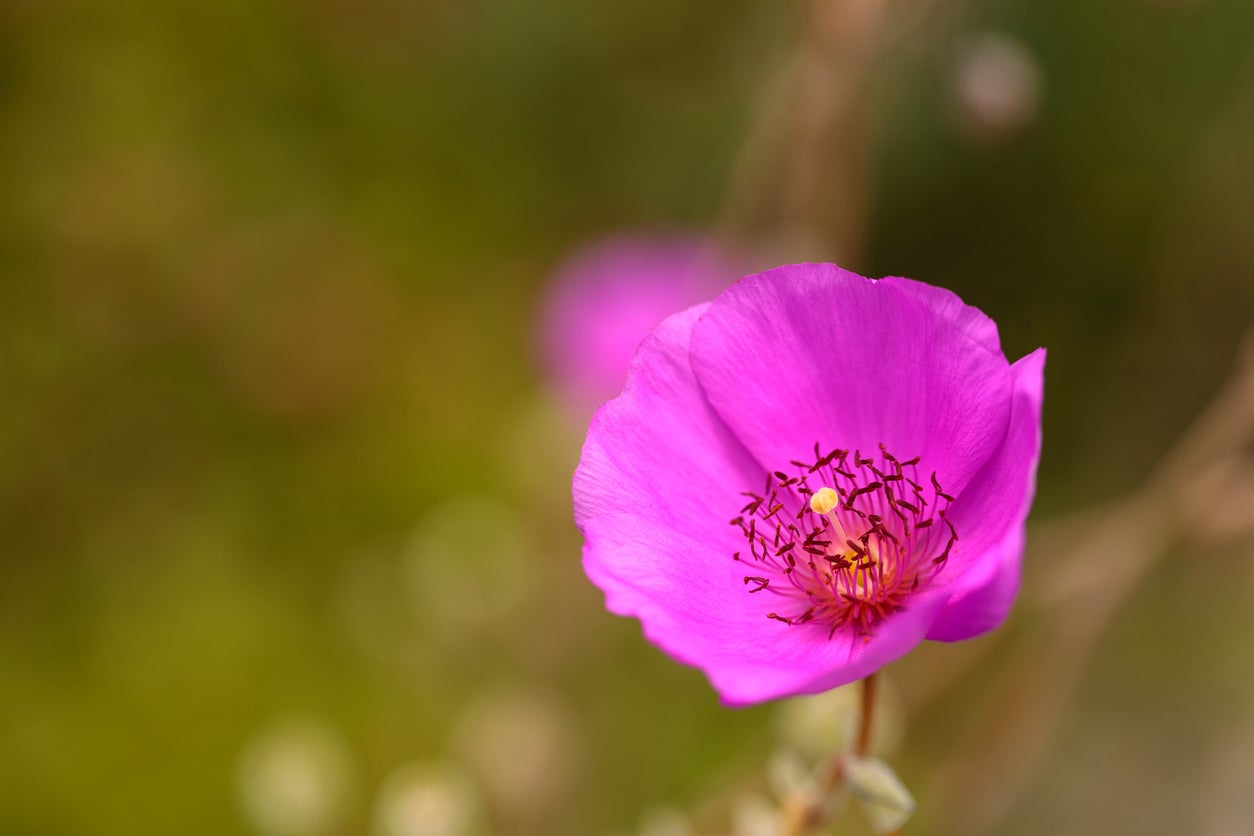Rock Purslane Care: How To Grow Rock Purslane Plants In The Garden


What is rock purslane? Native to Chile, rock purslane (Calandrinia spectabilis) is a frost-tender perennial that, in mild climates, produces masses of bright purple and pink, poppy-like blooms that attract bees and butterflies from spring until fall. The foliage is an attractive shade of bluish green.
Rock purslane plants are suitable for growing in USDA plant hardiness zones 8 and above. They can withstand temps as low as 25 degrees F. (-4 C.) and tolerate drought like a champ. In cooler climates, you can plant rock purslane as an annual. This versatile, spreading plant works well in rock gardens and is an ideal plant for xeriscaping. Rock purslane plants are also deer resistant. Read on for information on growing rock purslane.
Rock Purslane Care
Purchase rock purslane plants at a garden center or nursery. Alternatively, plant seeds directly in the garden after all possible danger of frost has passed in spring, or start them indoors eight weeks ahead of time.
Plant rock purslane in full sunlight. If your climate has hot summers, these plants will appreciate a little afternoon shade.
Rock purslane can grow in nearly any type of soil, but it must be well drained. Gritty or sandy soil is excellent. You can also plant rock purslane in containers filled with good quality potting mix. Mix in a little coarse sand to improve drainage.
Spread a thin layer of mulch around the plants after the ground thaws in spring.
Rock purslane requires very little irrigation. Water occasionally, especially when weather is hot and dry.
Sign up for the Gardening Know How newsletter today and receive a free copy of our e-book "How to Grow Delicious Tomatoes".
Cut rock purslane plants down to about 6 inches (15 cm.) in late fall.
Rock purslane is easy to propagate by planting small pieces of an established plant. This is a good way to replace old, overgrown plants.

A Credentialed Garden Writer, Mary H. Dyer was with Gardening Know How in the very beginning, publishing articles as early as 2007.